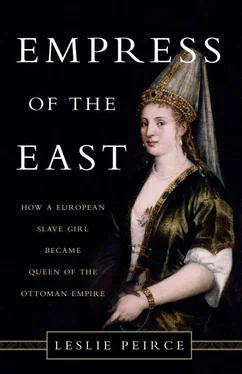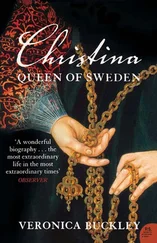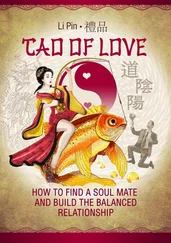Even with Suleyman away from Istanbul, cannons would sound to announce the royal birth. While not his first son, Mehmed was the first child of Suleyman’s sultanate. He was also the first son of a sultan to be born in the capital in some forty-five years. It must have been a thrilling moment for the people of Istanbul, proud that their young ruler was both militarily and sexually dynamic. As if celebrating the first anniversary of his ascension, Suleyman presented them with a new prince and a stunning victory. The first military campaign of his reign culminated in spectacular success with the capture of Belgrade, capital city of Serbia.
Alas, sorrow tinged the joy of Mehmed’s birth. In mid-October, during the army’s victory march back to Istanbul, Suleyman’s small son Murad died. The tragedy was horribly compounded when Murad’s sister, Suleyman’s only daughter, died two days before her father’s entry into the capital. On October 29, ten days after the sultan’s return, his oldest son, the nine-year-old Mahmud, succumbed to the epidemic, perhaps plague. [2] The first years of the 1520s were plague years in which the disease returned in naturally repeating waves (Nükhet Varlık, personal communication, May 26, 2016). See also Hammer, Histoire , 5:20.
The waves of devastating news surely called out large throngs of mourners to honor the funeral cortege as it wended its way on foot over Istanbul’s hills. Led by the empire’s viziers, the procession arrived at the cemetery where the children’s grandfather Selim lay in his tomb. If Mehmed’s was the city’s first royal birth in decades, the spectacle of three small coffins provided unaccustomed evidence of the all-too-human vulnerability of the royal family, the pivot of the empire’s existence.
As it mourned, the Old Palace was no doubt on medical alert. Any contagious disease could spread rapidly in its confined quarters. Roxelana had presumably been living in the Old Palace since the early stages of her pregnancy, since its team of female doctors could better care for her than could the skeletal staff in the Hall of the Maidens. Now, precautionary medical measures may have required that a demonstrably healthy wet nurse and governess temporarily care for the infant.
Everything we know about Roxelana suggests she was a person of determination and self-control, but she could certainly be forgiven any turbulent emotions in the aftermath of Mehmed’s birth. Relief and happiness that she and the child had emerged from the epidemic healthy were natural. Moreover, Roxelana had rapidly accomplished her purpose—producing a child for the dynasty. In turn, Mehmed garnered for her what she presumably desired—a secure position within the royal household. The slave girl who had lost her natal family now had a new one: through her son she now had blood ties to his father and grandmother.
Mehmed’s birth introduced a legal shift in Roxelana’s status. Islamic law recognized and protected the concubine’s role as mother: unlike an ordinary slave, she could not be sold or given away, and she would automatically be freed upon the death of her master. Her new status under the law as umm al-walad (mother of a child) signaled these rights and her identity. The Ottoman dynasty was not always faithful to the letter of the law, but in this case it capitalized on the legal category by charging royal concubines with dedicating themselves to their children’s welfare and upbringing.
There were limits to Roxelana’s prerogatives as mother, however. Mehmed was her son, but he was primarily a child of the dynasty. The House of Osman, as historians of the time called it, was a venerable lineage, now entering its third century of rule. As son of the reigning sultan and a potential ruler of the empire, Mehmed carried with him the investment of the entire imperial family. Now the alarming death of two princes within a matter of weeks raised both Mehmed’s and his mother’s value, something Roxelana was bound to appreciate. The heightened health measures that would be instituted may have kept mother and child isolated from one another.
The tragic deaths of Mahmud and Murad within a matter of weeks sharpened awareness of the hazards of an empire based on hereditary rule. Were the House of Osman to die out, the empire would dissolve, and a new state under the aegis of a new dynasty would inevitably come into being. If the new mother’s emotions were mixed, Suleyman carried the heavy weight of political as well as personal distress. His biographers have paid scant if any attention to the wrenching loss of three children and the grief that inevitably ensued. They focus instead on the affairs of state into which the sultan was plunged on his return from Belgrade. To be sure, Suleyman was probably fortunate to have the distraction of envoys who arrived one after the other from Venice, the merchant state of Ragusa, and the Grand Duchy of Moscow. They came to convey congratulations on his recent victory and to request favors of his government. But the security of the royal family was also a political matter.
As if the loss of three children was not devastating enough, the young father would feel concern over the well-being of the living ones—of Mustafa, now the oldest at six, and the newborn Mehmed, the only other Ottoman prince. Suleyman clearly needed more sons. For her part, Roxelana had presumably mastered something of the politics of concubinage during her training and understood the future that was in store for her. Her career as mother of a son was laid out carefully, including the rule that she was no longer eligible for the sultan’s bed. She was mother of a prince now; her work as concubine was complete. If Roxelana had come to depend on the father of her son or learned to care for him in the months they were together, she would need to rein in those feelings.
THE BIRTH OF Mehmed introduced changes into Roxelana’s life. As her status and value rose within the imperial household, so did her material circumstances. “When one of the maidens becomes pregnant by the Monarch, her salary is increased and she is honored and elevated above the others, and is served as a Lady,” observed the Venetian Giovanni Maria Angiolello, usually our best informant on the career of the concubine. [3] Angiolello, Historia , 128.
In the detailed palace account books that recorded the stipends of imperial household members, Roxelana would now be listed not by name but by the honorific title “the mother of Prince Mehmed.” Her son had catapulted her into the handsomely rewarded elite of palace women, the mothers of royal offspring.
Roxelana could now begin to spend—indeed her position demanded that she do so, generously but prudently. (All palace women of status received a daily stipend and a separate “kitchen” budget.) [4] Barkan, Istanbul , 7ff.
Apart from seeing to the sundry daily needs of her suite, protocol required that she reward with tips and gifts those who served her or the baby. As the health crisis passed and Roxelana emerged from the rituals of postpartum confinement, she would embark on the privilege of receiving visitors and the duty of providing refreshments to palace women who came to call on the little prince and his mother. Suleyman now also had a reason to visit, rather than to summon.
A new mother’s spatial location within the palace served as a public announcement of her elevated rank. Once she returned to the Old Palace from her interlude with Suleyman, Roxelana graduated from the dormitory quarters of the trainees to private chambers befitting a full-fledged concubine carrying the sultan’s child. Mehmed’s birth perhaps earned her an even larger and more lavishly appointed suite. Additional attendants would be assigned to serve Roxelana, organizing meals, supervising her visits to the bath, looking after her wardrobe, and conveying messages. Mehmed too would acquire a small retinue. Foremost among the women assigned to care of the infant was his daye , the governess assigned to him for life. Unfortunately, her identity is unknown, since she too was recognized by her title.
Читать дальше












